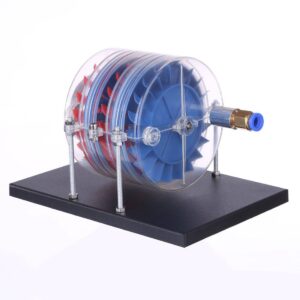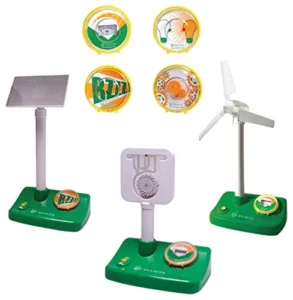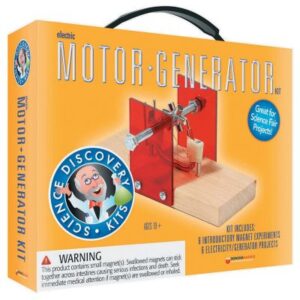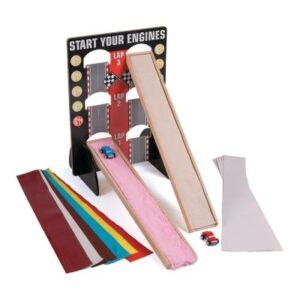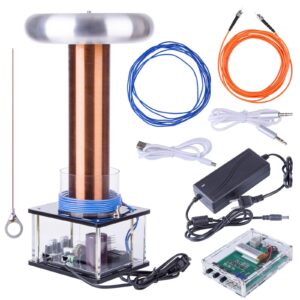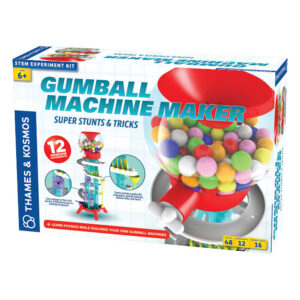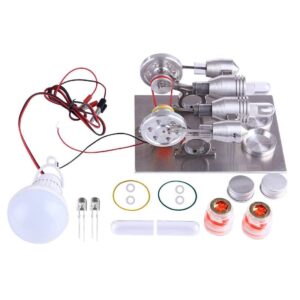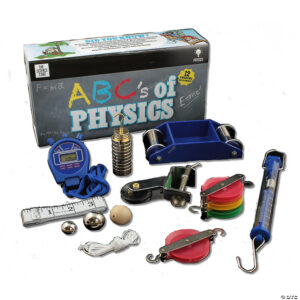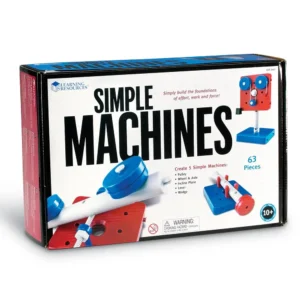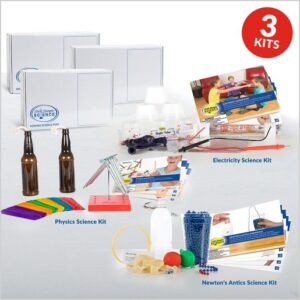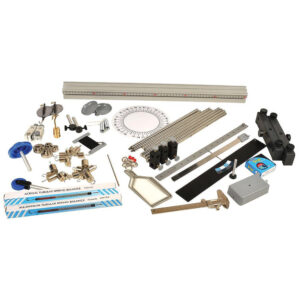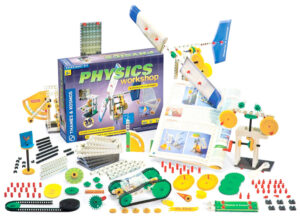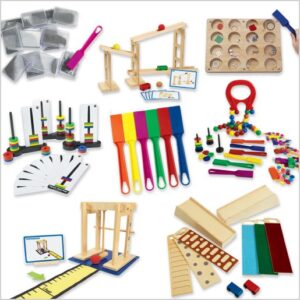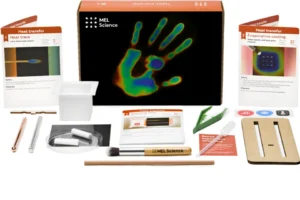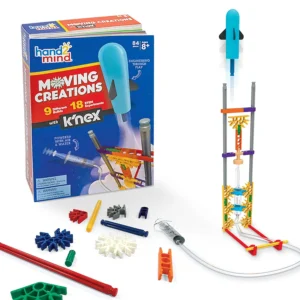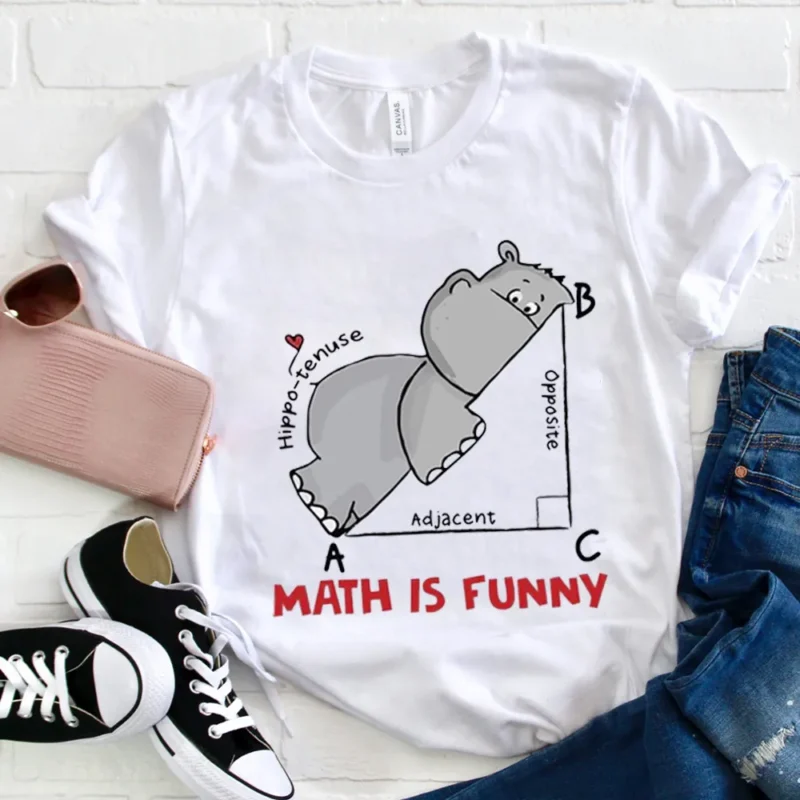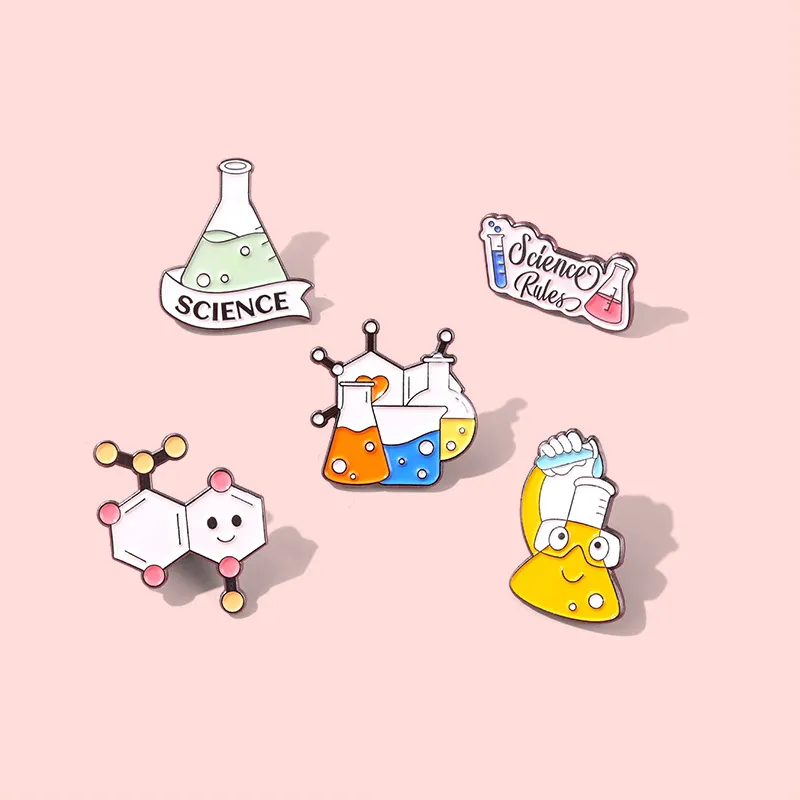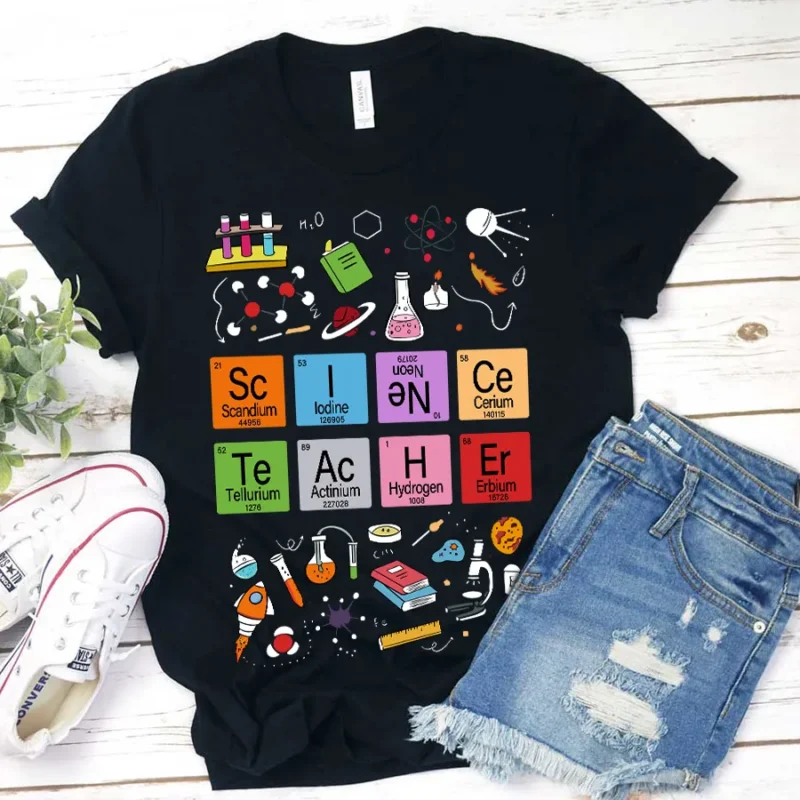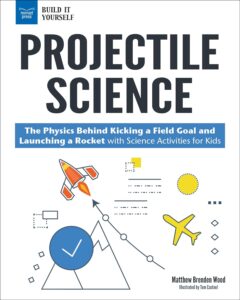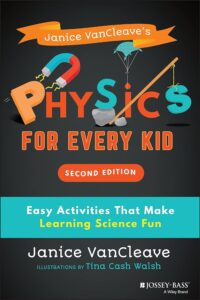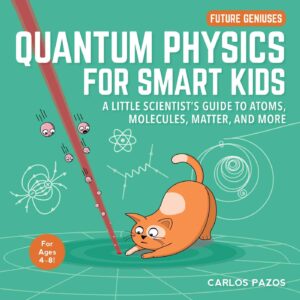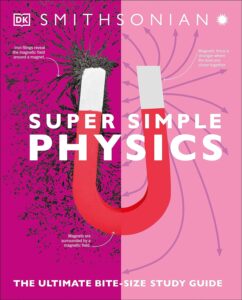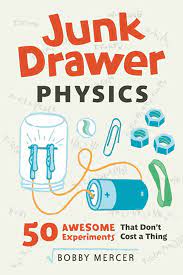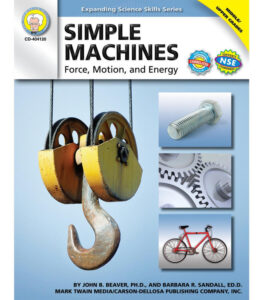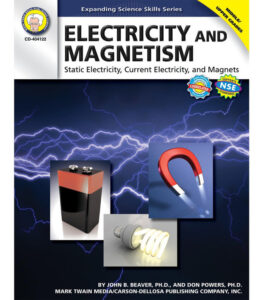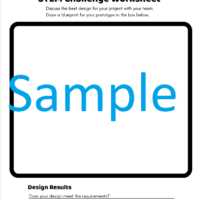There are so many STEM activities for elementary students, but what about middle school STEM activities? There are typically a lot fewer middle school STEM lesson plans available for teachers. But today is your lucky day, because today, we are offering a marble STEM challenge lesson plan that delves into the exciting realm of roller coaster physics. Easily demonstrate the concepts of potential and kinetic energy using just a marble and paper.
Our straightforward marble STEM challenge roller coaster lesson plan simplifies teaching physics for and provides an exciting introduction into physics at a middle school level.
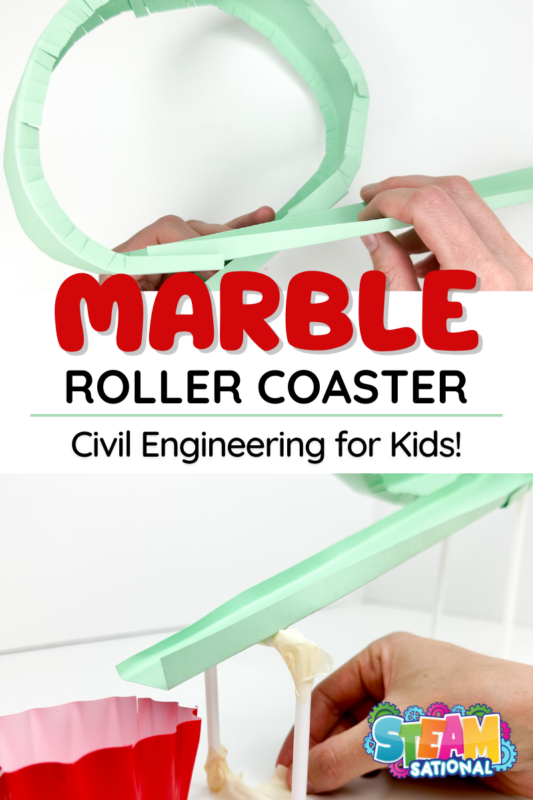
Find out how to teach this exciting STEM lesson that is a favorite with middle school students and kids in upper elementary.
How to Make a Roller Coaster Project
Learn about the fascinating physics of roller coasters!
Understand the energy conversion between gravitational potential energy and kinetic energy, design your very own roller coaster model, and put your problem-solving skills to the test.
Roller Coaster STEM Challenge Table of Contents
Physics STEM Resources
Here are some physics resources and demonstrations that help kids understand the basics of physics in a hands-on way!
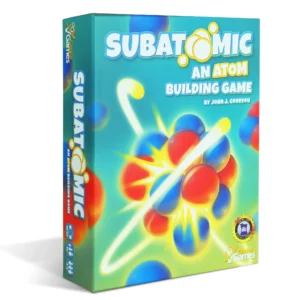
How do Marble Roller Coasters Work?
Your roller coaster marble STEM challenge operates on physics! How? It’s all about energy!
Roller coasters don’t need engines like cars or trains. How do they move so fast and excitingly then?
They cleverly use the stored energy from being pulled up a big hill (that’s gravitational potential energy). When they zoom down, this energy becomes motion energy, known as kinetic energy.
As the marble climbs up another hill or twist around, they lose some of that motion energy because of friction and air pushing against it.
Roller coaster project physics
Marble roller coasters are a hands-on way to explore the fundamental principles of physics, particularly those related to potential and kinetic energy, gravity, and friction.
Here’s a basic breakdown of how your marble STEM challenge coaster will work:
Potential Energy (Stored Energy):
When you lift the marble to the top of the roller coaster track, you’re giving it gravitational potential energy.
This energy is determined by the marble’s height relative to the lowest point in the coaster. The higher it is, the more potential energy it has.
Kinetic Energy (Motion Energy):
As you release the marble, the potential energy starts converting to kinetic energy.
The marble begins to move, gaining speed as it goes downhill due to the force of gravity.
Conservation of Energy:
In an ideal world (without friction or air resistance), the total energy in the system remains constant.
So, the potential energy the marble has at the top is converted entirely into kinetic energy as it moves down.
Some of this energy is lost to friction and air resistance, which is why marble roller coasters (and real ones) eventually come to a stop.

Curves, Loops, and Hills:
The design of the track will influence the marble’s speed and direction. For instance:
For a marble to successfully navigate a loop, it must have enough kinetic energy (speed) to overcome gravity and friction.
After a descent, a marble can climb a hill using the kinetic energy it gained from the previous drop, but it will not climb higher than its initial release height (ignoring friction).
Each subsequent hill is typically lower than the previous one.
Curves can change the direction of the marble, and depending on the banking and tightness of the curve, it can also affect the marble’s speed.
Friction and Air Resistance:
These are forces that work against the marble’s motion.
The roughness of the track, the material of the marble, and even the air can slow down the marble.
In designing an efficient marble roller coaster, one would aim to minimize these forces.
Marble STEM Challenge End:
The marble’s energy eventually diminishes due to friction and air resistance, causing the marble to stop, marking the end of its journey.
Physics STEM Kits for the Classroom
You may find using these physics classroom kit sets handy for helping students understand difficult physics concepts!
What Makes a Good Roller Coaster Design?
There are some fundamental principles at work that are necessary to consider while making a paper roller coaster track for a marble.
Here is what is essential to creating a good marble STEM challenge roller coaster design:
Sturdy Base: The foundation of your coaster is essential. Ensure the base is wide and robust enough to support the entire structure.
Smooth Tracks: The smoother the tracks, the less friction the marble will encounter, allowing it to maintain its speed.
STEM Shirts for Teachers
These STEM shirts are adorable and super fun to wear while teaching STEM or science.
Gradual Slopes: Start with a high drop to give the marble initial energy, but subsequent slopes should be more gradual to maintain the marble’s momentum.
Banked Turns: To prevent the marble from flying off the coaster during turns, bank or tilt the turns. This uses centripetal force to keep the marble on the track.
Variety of Features: Introduce various features like loops, tunnels, or spirals.
Remember that loops need to be well-calculated; the marble requires enough kinetic energy to complete the loop without falling out.
Consistent Width: Ensure the width of the track remains consistent so the marble doesn’t get stuck or fly off the sides.
Reinforcements: Paper can be flimsy, so reinforce joints and crucial parts of your coaster with tape, glue, or additional layers of paper.
Multiple Tests: Continuously test your roller coaster with the marble as you build. This iterative process helps identify problems early on and makes the design process more efficient.
Safety Barriers: Especially if you’re designing a coaster with sharp turns or steep drops, consider adding “safety barriers” or “walls” on the sides of the tracks to prevent the marble from flying off.
Minimal Joints: The fewer joints or connections in the paper, the smoother the ride for the marble. Each joint can introduce bumps or friction.
Marble Roller Coaster Materials
Here are the materials that you will need to create the paper roller coaster for the marble STEM challenge!
- Construction paper
- Masking tape
- Scissors
- Ruler
- Pencil
- Drinking straws
- Marbles
- STEM worksheet
- Muffin cups
- STEM notebook
- Scientific calculator
Physics Books for Students
Students beyond primary grades will find these physics books interesting!
Learn more about energy, forces and motion, and learn how rectilinear motion works and the math behind it.
How to Build a Roller Coaster for a Marble
Follow along with this middle school physics lesson plan to make teaching physics to middle schoolers a breeze in the marble STEM challenge!
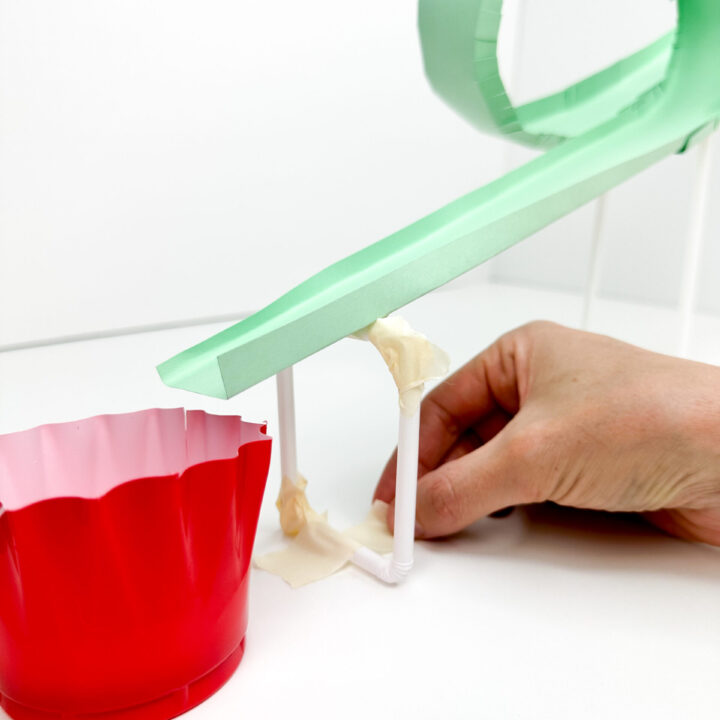
Marble STEM Challenge Roller Coaster Lesson Plan
Uncover the fascinating world of roller coaster physics and make it a blast for your students with this marble STEM challenge. Discover the power of potential and kinetic energy with a marble and paper. This easy marble roller coaster lesson plan makes it easy to teach physics in middle school.
Materials
- Colored paper
- Masking tape
- Pencil
- Drinking straws
- 1 marble for each student group
- Muffin cups or other small cups
Tools
- Scissors
- Ruler
- Science notebook or worksheet
- Calculator
Instructions
- Here is a basic lesson plan for this roller coaster STEM challenge!
- Follow along with this basic lesson plan outline and expand on the basic lesson plan to cover the points you want to in this marble STEM challenge.
- Physics Discussion (10 minutes):
- What's potential and kinetic energy? Let's dive in.
- Think of stretching a rubber band (stored energy) and letting it go (motion energy) or a ball zipping down a slide!
- A roller coaster's fun twists and turns all rely on managing these energies.
- Sketch Your Ride (15 minutes):
- Sketch your dream roller coaster track! Remember, the first big drop provides the energy for the rest of the ride.
- Smooth turns, fun loops, and thrilling drops are all welcome – just avoid sudden, sharp corners.
- Build it! (30 minutes):
- Get your building materials ready. Time to bring your coaster to life!
- Some tips:
- For a straight track: Cut paper into a strip, fold the sides up.
- Loopy or hilly track: Add tabs to your straight track.
- Want curves? Add little snips and fold to adjust.
- Need support? Fold drinking straws into square struts and attach to the base.
- Roller Coaster Test Drive (20 minutes):
- Set up your track on the cardboard base.
- Let your marble loose from the top. Does it reach the end? If not, where does it slow or stop?
- Fix & Tweak (15 minutes):
- Spotted a glitch in your coaster? Think of solutions!
- Maybe smoothen a curve or give a bigger initial drop for more energy.
- Adjust, test, and see your marble conquer the track!
- Wrap-Up Chats (5 minutes):
- Roller coasters need smooth changes, enough energy, and clever design to counter friction and air resistance.
Recommended Products
As an Amazon Associate and member of other affiliate programs, I earn from qualifying purchases.

